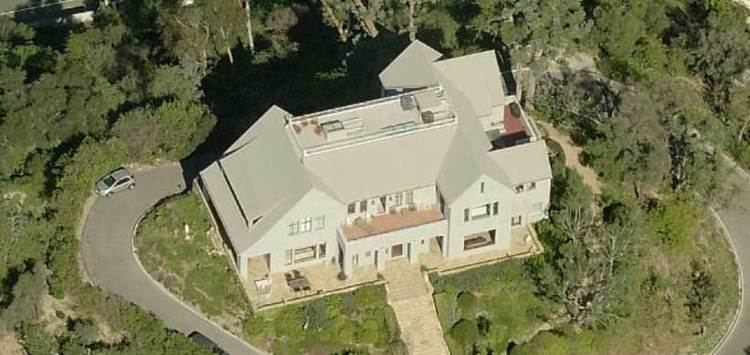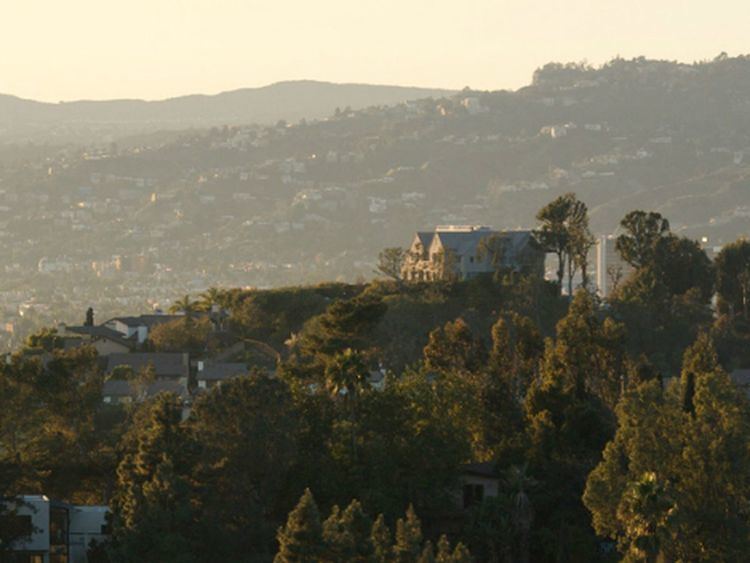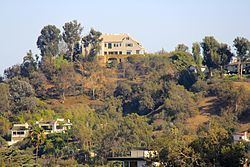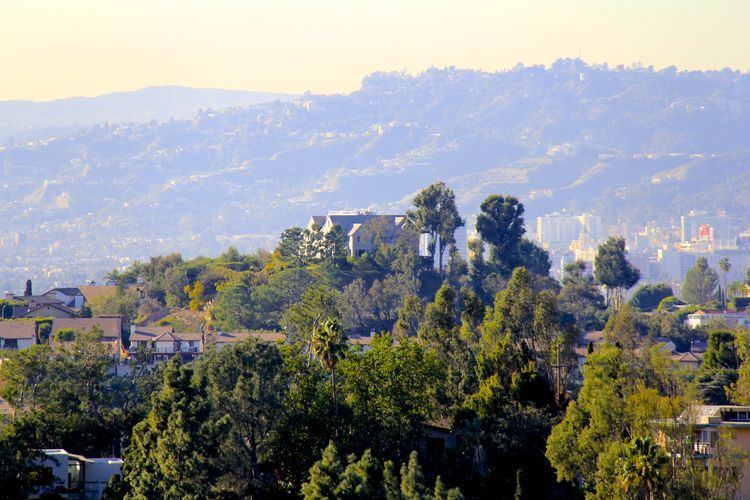Built 1926 Opened 1926 Added to NRHP 22 July 1987 | NRHP Reference # 87001174 Area 7,689 m² | |
Location 1809 Apex Ave., Los Angeles, California Similar Silver Lake Reservoir, O'Connor Hospital, Glen Tavern Inn, Crank House, Fremont Peak | ||
Rvisiting the restoration of the garbutt house silver lake aka garbutt hathaway estate
Garbutt House is a 20-room mansion in the Silver Lake section of Los Angeles built from 1926 to 1928 as the residence of Frank A. Garbutt. It was listed in the National Register of Historic Places in 1987.
Contents
- Rvisiting the restoration of the garbutt house silver lake aka garbutt hathaway estate
- Garbutt house on hathaway hill
- Frank A Garbutt
- Garbutt House and the Garbutt Hathaway Estate
- Preservation battles and residential development
- Filming location
- Current ownership
- References

Garbutt house on hathaway hill
Frank A. Garbutt
Frank A. Garbutt, an inventor, industrialist and movie pioneer, was one of the most prominent citizens of Los Angeles in the late 19th and early 20th Century. He invented and secured patents on certain oil drilling tools in the late 1880s that were the initial source of his wealth. Garbutt also became involved in other businesses. He owned oil wells and was one of the original investors in aviation pioneer Glenn Martin's aircraft business (later to become Martin Marietta). He also owned interests in a boat-building business and a business operating ferries from San Pedro to Terminal Island. He also played a role in the founding of Famous Players-Lasky (later Paramount Studios), Union Oil Company and the Automobile Club of Southern California.
Garbutt House and the Garbutt-Hathaway Estate

In 1923, Garbutt acquired a 37-acre (150,000 m2) hilltop site overlooking the Silver Lake reservoir with views of the Pacific Ocean, the Santa Monica and Verdugo Mountains and the downtown skyline. Garbutt and his family built three houses on the site, which came to be known as the Garbutt-Hathaway Estate. Garbutt himself lived in the 20-room mansion built between 1926 and 1928 that came to be known as Garbutt House. The house has nearly 15,000 square feet (1,400 m2) of space, rises 228 feet (69 m) to its crest and was built like a citadel out of concrete to survive earthquakes, floods and fires. His daughter Melodile later recalled that the entire first floor was poured in one pouring that took two days and one night of steady pouring with three shifts of workers. Due to an intense fear of fire, Garbutt even had the roof and walls built of concrete, installed steel-reinforced doors and allowed no fireplaces in the home. A subsequent owner noted that the concrete construction was "comparable to any of the finest bunkers." The house also had bronze window frames, hand carved teak and marble floors. The first floor was entirely travertine, and Garbutt hired an artist who spent several months painting the beams in the living room.

Garbutt worked at his inventions at the Silver Lake mansion, building race cars, inventing a soapless detergent, and trying to invent a superior chewing gum.
Preservation battles and residential development

Garbutt died in 1947, but his son and two daughters continued to live at the estate after his death. One of his daughters never married and lived at Garbutt House until 1960, when the estate was sold. Daughter Melodile recalled that they sold the estate after her brother and husband had died, and her sister did not want to live by herself in the big house.

The houses sat dormant for several years as owners battled with the city and preservationists over plans to raze the three houses and build condominiums or a large housing development on the site. In 1975, Los Angeles Times architecture critic, John Pastier, noted that the estate's "arcadian acreage" was 99% undeveloped and "looks like a park." Pastier wrote a lengthy column criticizing a plan to cover the estate with 530 condominium units requiring removal of 60% of the property's trees. He argued for a scaled-back development that would preserve the three houses as a "tesimony to the area's history and to a vanished way of life." In 1978, two of the houses were torn down to make room for a 100-home development, but the Garbutt House was spared. In 1982, nearly 100 homes were built on the property and were compared to "a village at the foot of the castle." Garbutt House was listed in the National Register of Historic Places in 1987.
Filming location
The Garbutt-Hathaway Estate has long been a popular filming location, dating back to the silent film era. In 1981, a low-budget Carolco horror film called "Superstition" (about a haunted house on the site where a woman was put to death as a witch 300 years earlier) was shot at Garbutt House. The shooting of "Superstition" was reportedly subject to incidents of alleged "haunting", including one in which a security guard who was required to spend the night in the house quit after reporting he had seen a "ghost", another security guard who saw the helmet on a Knight's armor display float off the shoulders of the armor and disappear into the kitchen area and another in which the film's director was locked in a room when the doorknob fell off and had to be pried free with crowbars.
Current ownership
The mansion is currently owned by American Apparel founder Dov Charney. It was used as temporary lodging for visitors to the company while Charney was chairman. He reportedly added a sculpture of a giant raised middle finger outside the front door.
